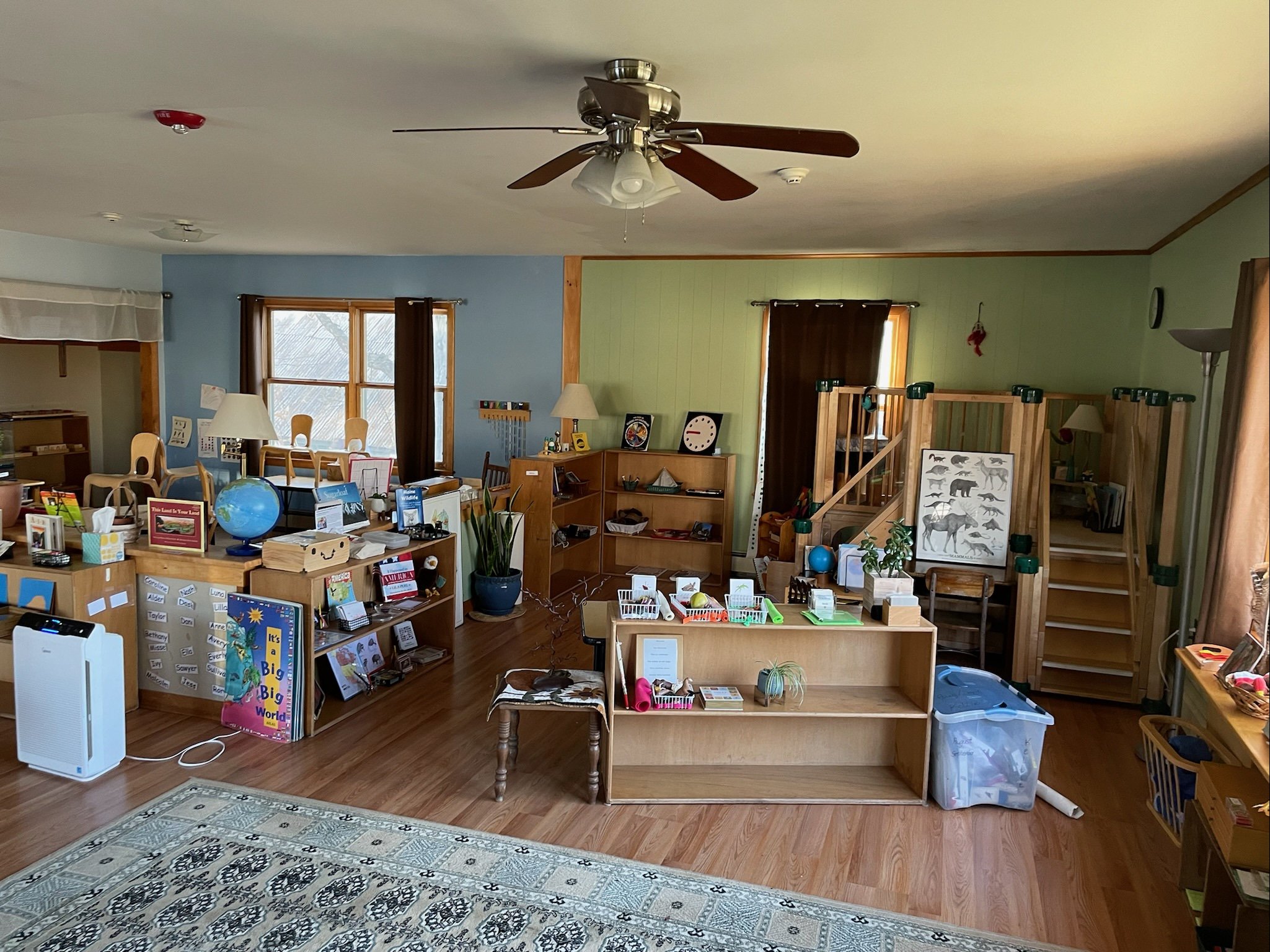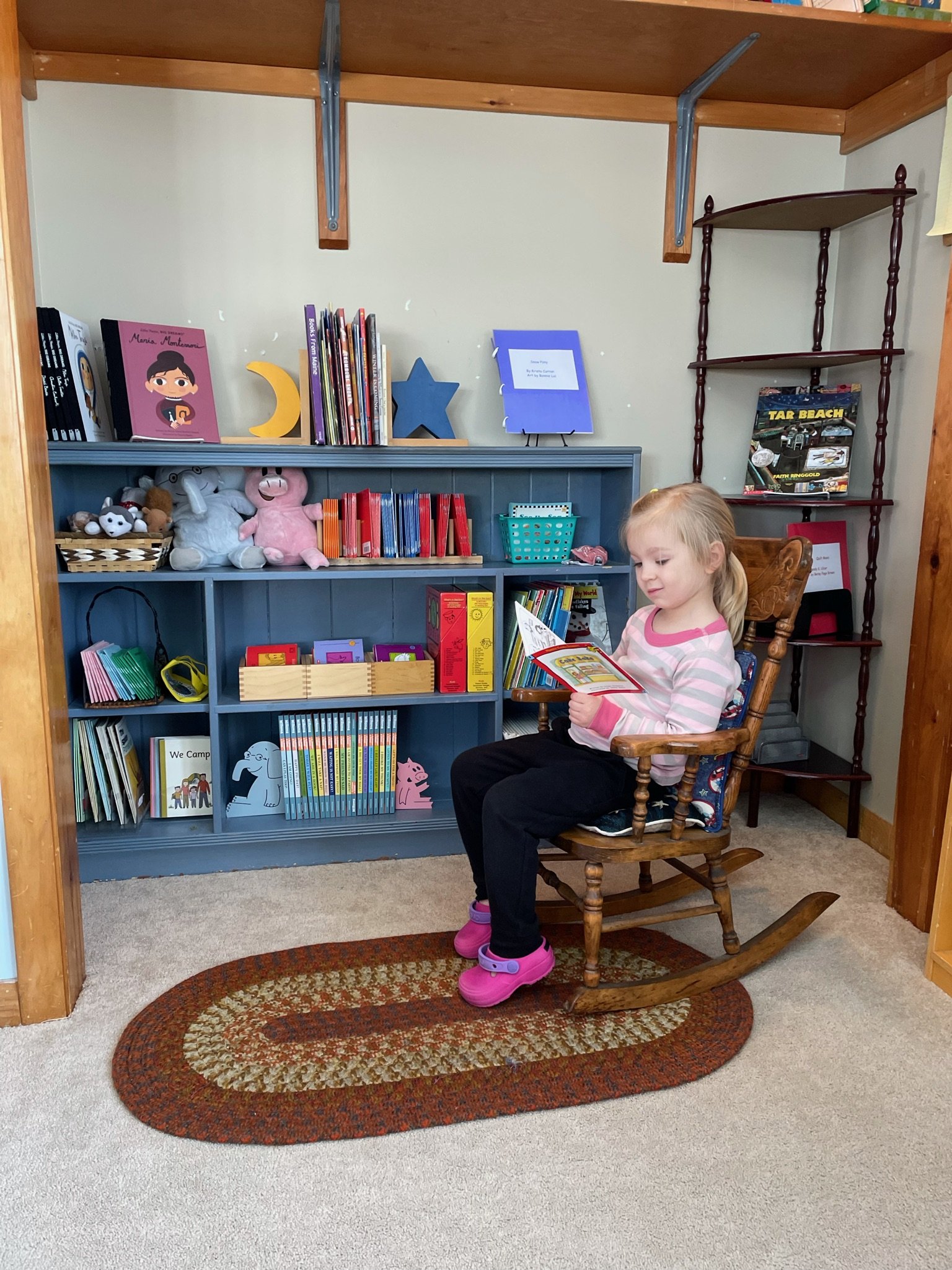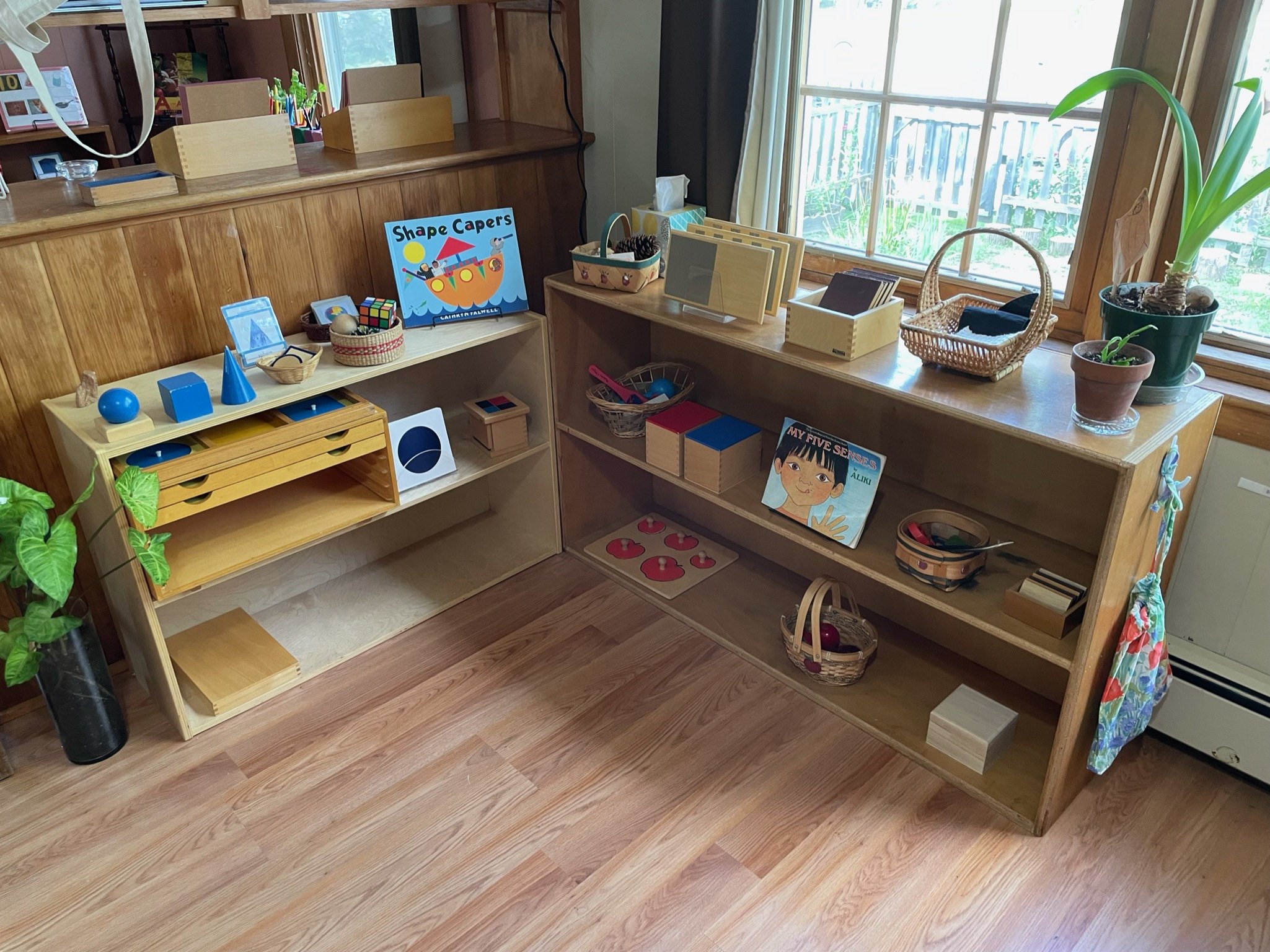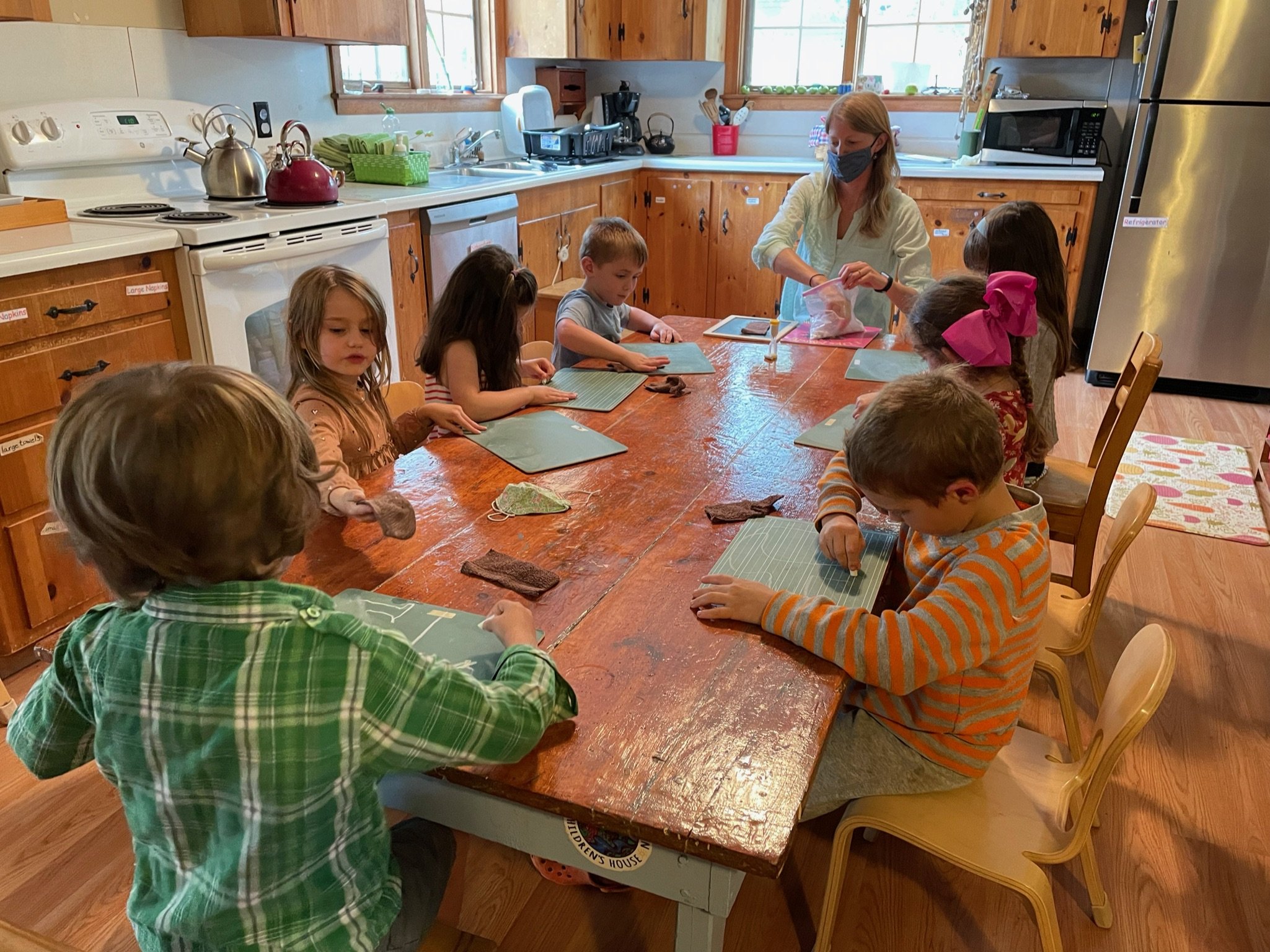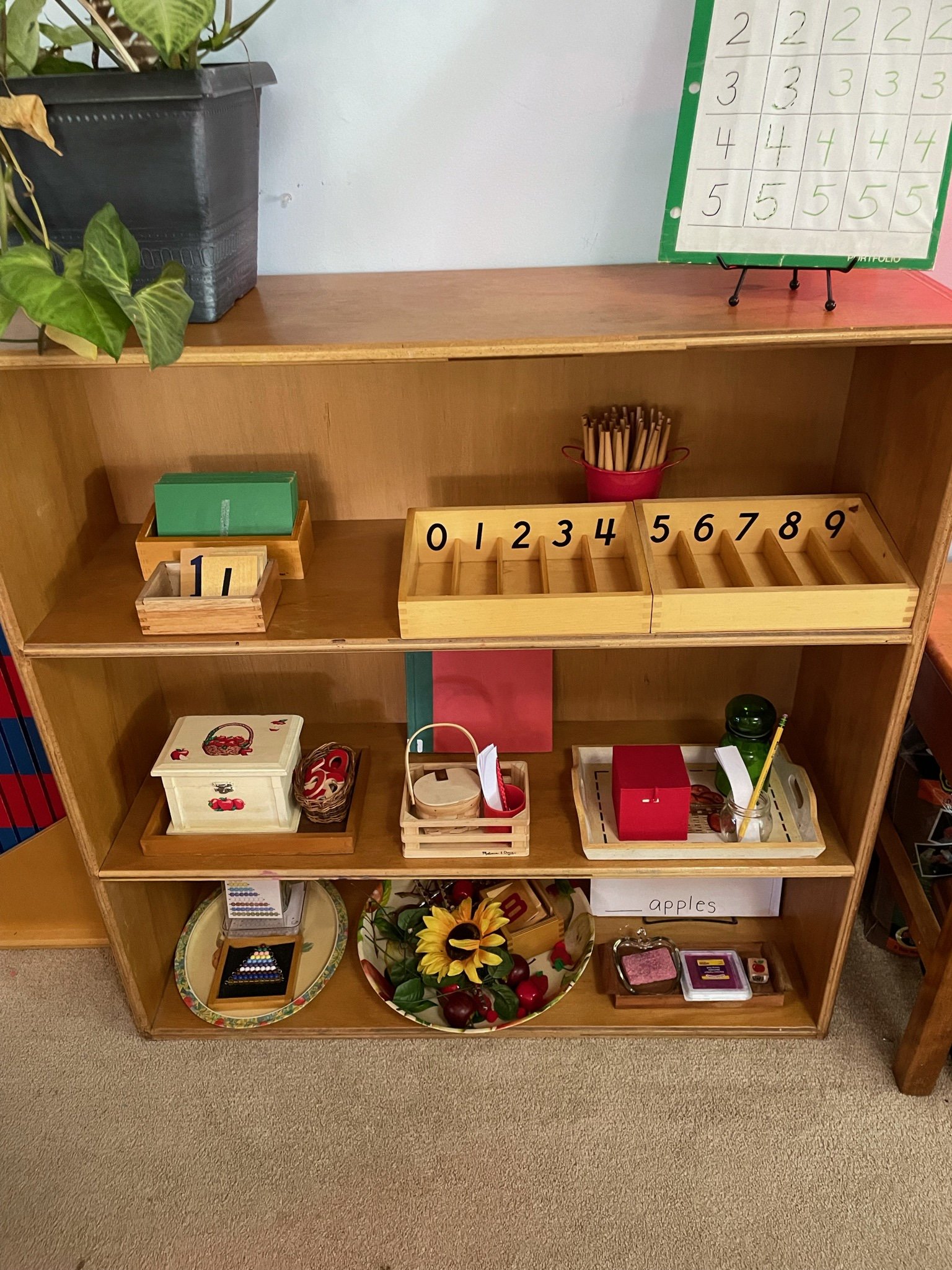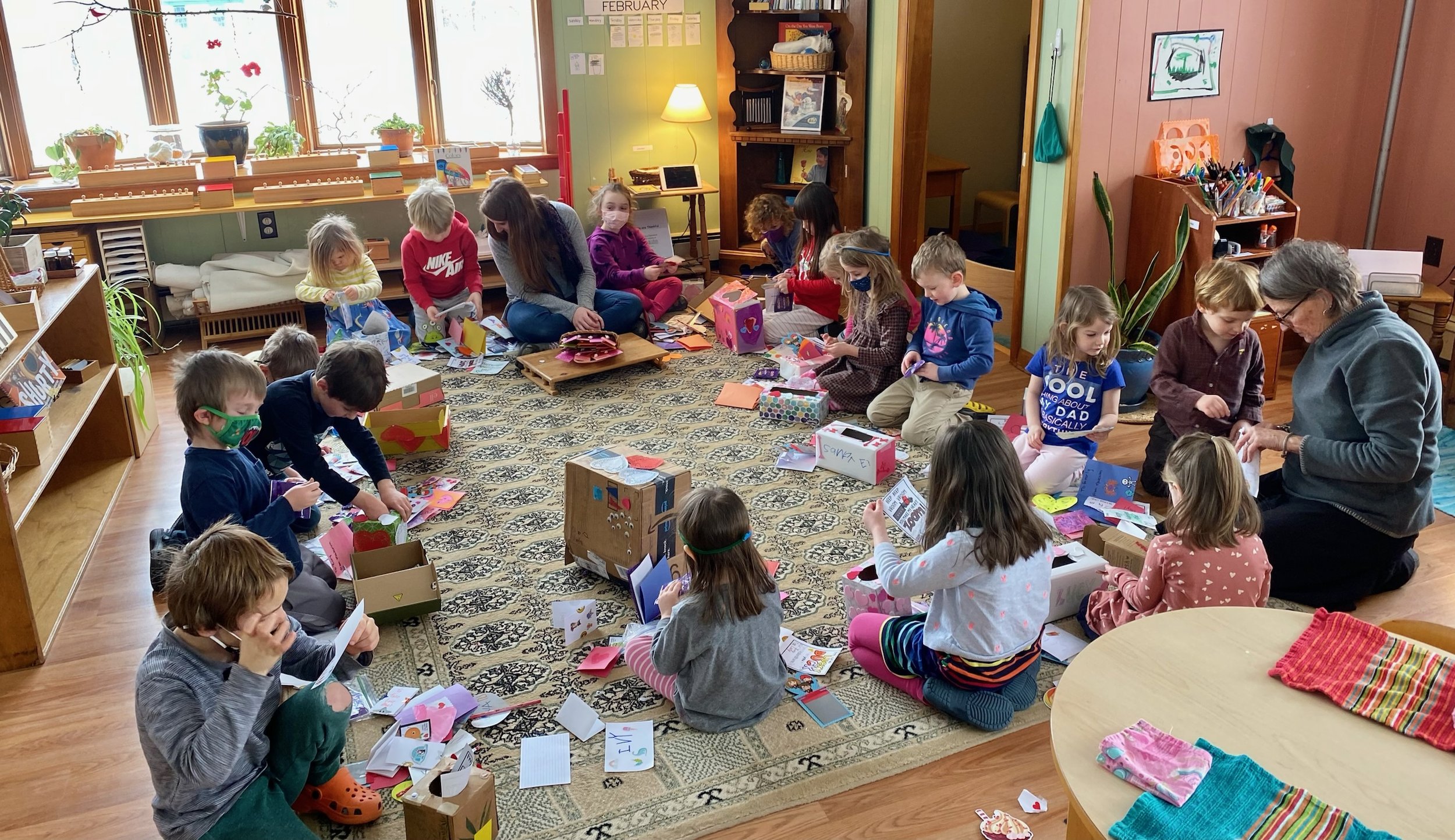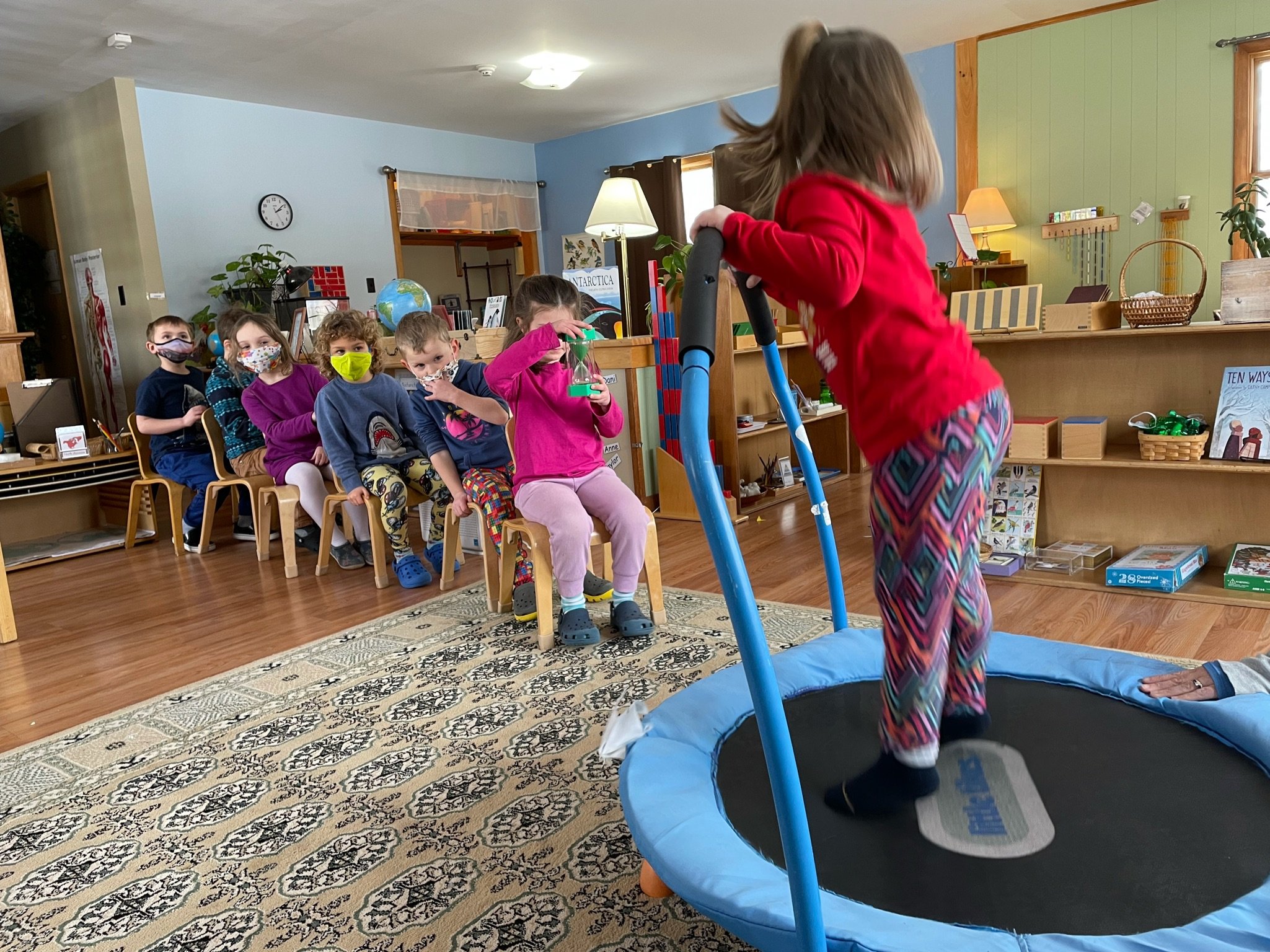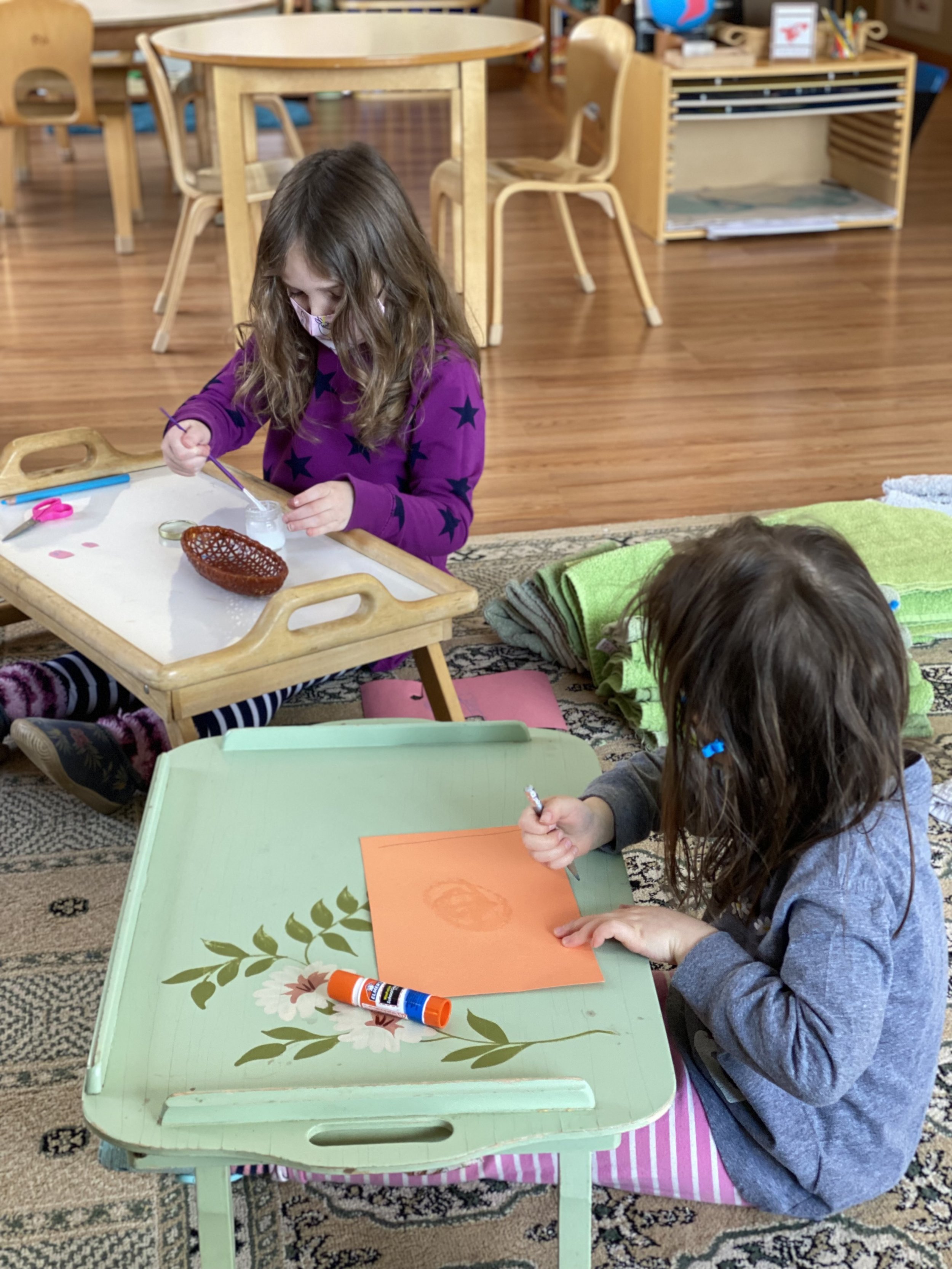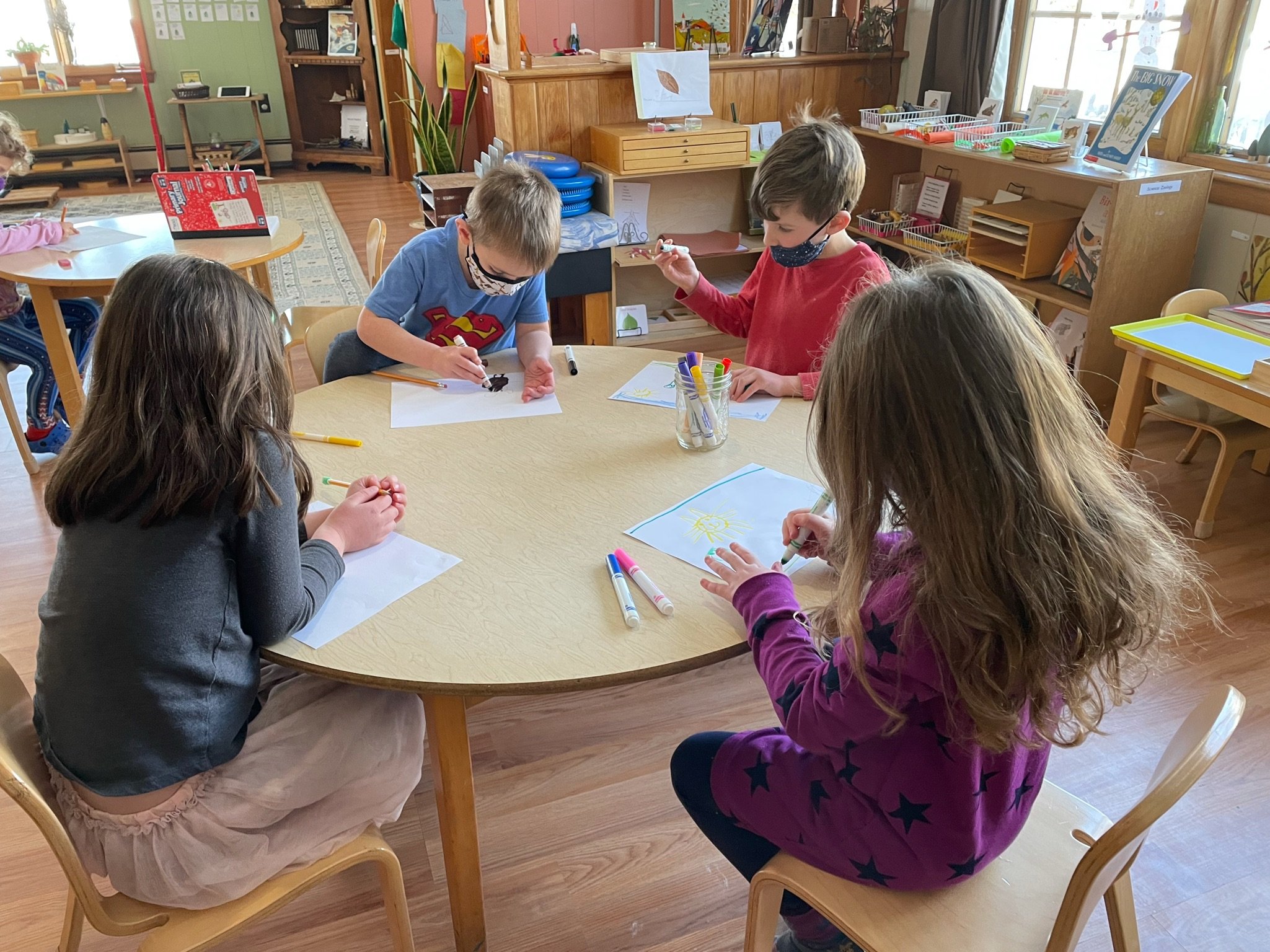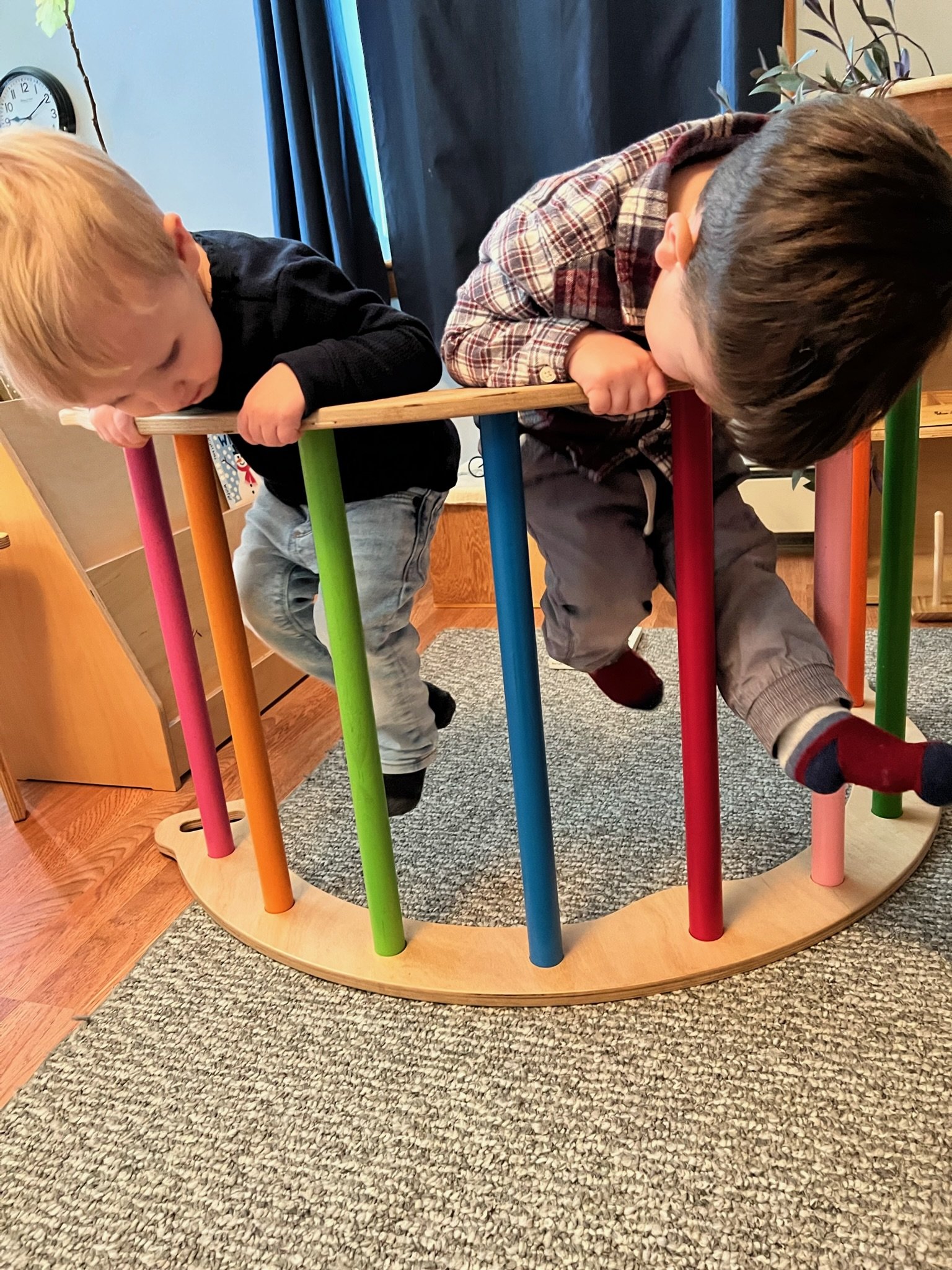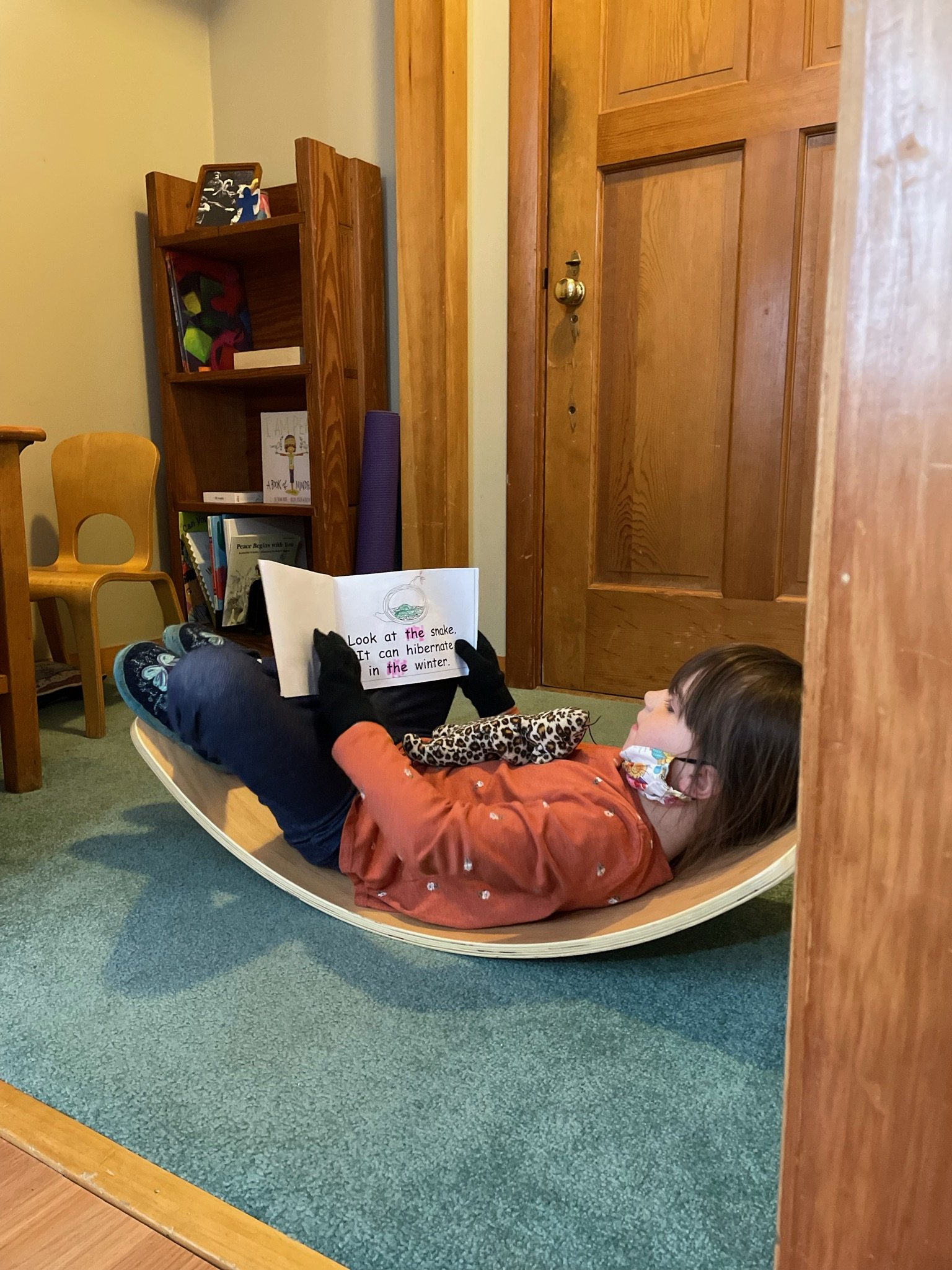The Prepared Environment
It is the responsibility of the trained Montessori teacher to design and arrange the prepared environment. We want to create a classroom that is attractive, with a sense of beauty and peacefulness. This involves setting up the materials in a precise, orderly manner. The materials are arranged on the shelves from left to right and top to bottom; which aides in the brains training for reading and writing. The activities are also arranged from simple to complex across the shelf within each curriculum area.
Each area of the classroom speaks to specific developmental needs in the child. The innate to urge to develop themselves attracts the child to the work. I will go more in depth about the different areas of the classroom as well as some activities and their purposes in my next Montessori Minute.
By having child-size furniture and manipulatives in the prepared environment, we are catering to the child’s sense of order and independence. Mindful of the child’s sense of order, we create an environment that is simple and uncluttered. Whenever possible, we use real objects and natural materials (glass, wood, stone, etc.).
We design our environment to ensure freedom of movement while allowing for physical and emotional safety. This freedom fosters learning and personal development. Dr. Montessori said to “give the child freedom within limits.” The freedom of choice is one of the aspects that distinguishes a Montessori classroom from other educational or philosophical settings. Within this freedom, the child can choose their area of interest, they can choose to work alone or with another, to eat a snack or not, to express themselves, and more. Because of these choices, the child also learns valuable social skills such as asking to work with another or inviting a friend to snack and accepting the answer. “Yes” is always a welcomed response, while hearing “no” is a learning tool for the children. We model gracious ways to say “no", such as, “I want to work alone right now, but I will work with your later,” or “I want to work alone now, and I will have a snack with you when I’m done.”
The classroom ‘rules’ are Be Safe, Be Kind, Be Gentle. These ‘rules’ are the guidelines for all behavior in the environment and can be applied to any scenario. We can be safe, kind, and gentle with our words, with our hands and bodies, and with the materials in the classroom.
The classroom is a place where the child can learn at their own pace, in a supportive and nurturing community. It is our job, as the trained Montessori teacher, to build and develop their environment so it is prepared for them to thrive.
“I never teach my pupils, I only attempt to provide the conditions in which they can learn.”

